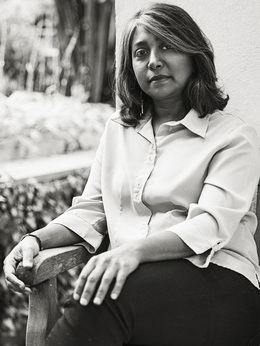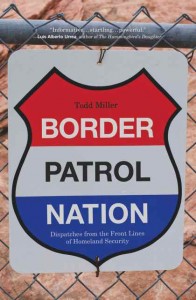I have long been interested in the plight of the domestic worker, so when House Workers Unite: The Untold Story of African American Women Who Built a Movement came across my transom, I leapt on it. It’s a wonderful read, skillfully written and meticulously researched. So I thought I’d pick the brain of the author, Premilla Nadasen, and see what light she can shed on this dirty little secret of American life.
To read this interview on the Huffington Post, click here.
David Henry Sterry: What led you to become interested in the plight of the domestic worker?
Premilla Nadasen: I live in New York City and a little over ten years ago I learned of the amazing organizing by Domestic Workers United, a coalition of community-based groups representing different ethnic and racial backgrounds. I attended some meetings and demonstrations and was impressed with their innovative labor organizing strategies–especially at a moment when so many political commentators lamented the decline of the labor movement. As a historian, I began to think about antecedents to this movement as well as earlier instances of household worker organizing. I knew about the history of organizing among African American domestic workers–but was surprised that so little had been written on the post-period. So, I decided to write a full-length monograph of this movement. I found that examining the history of domestic worker activism adds a new dimension to the civil rights movement and labor organizing.
DHS: I’m a first-generation American, and I feel it has given me a very different lens than most when it comes to looking at the United States in terms of race, labor, and the class system. Has being raised by assimilating foreigners impacted the way you look at this country?
PN: Definitely. The immigrant experience for me has been partly about seeing the United States as a land of opportunity. We emigrated from apartheid South Africa, a violent, repressive country. My father had been involved in the anti-apartheid movement and was a victim of harassment. The United States, at least on the surface, seemed to offer something better. It didn’t take long, however, to learn that the U.S. had its own structural race/class system.
As an undergraduate student at the University of Michigan I was involved in a student organization that addressed both apartheid in South Africa and racism on the U-M campus. So, my immigrant experience and the barriers that my family and I faced enabled me to understand more clearly the brutal history of racism in this country. I don’t think, however, that the immigrant experience is uniform. There are immigrants who come here with both race and class privilege and use that to integrate into the power structure. Class matters.
DHS: How do you see the struggle of the household worker activists from the 1950s through the 1970s reflected in the world of 2015?
PN: Household workers of the 1950s and 1960s are the prototypical precarious workers. Precarious labor, so much a topic of conversation in the current moment, is work that is insecure, poorly paid, unprotected and unregulated. Workers may be employed temporarily or part-time, or be subcontracted or self-employed. Labor activists today are grappling with how to organize this kind of precarious worker–whether they are Uber drivers or adjunct professors.
I don’t see precarious labor as something new. Certain categories of workers, very often immigrants and people of color, have always labored in precarious conditions. Bracero workers from Mexico, Puerto Rican contract laborers, farm workers, domestic workers, among others, were denied many of the labor protections that were considered basic rights. So, even in the mid-20th century when most American workers seemed to benefit from good pay and generous benefits, some workers labored under precarious circumstances. Examining the activism of household workers in the post-WWII period can offer some lessons for contemporary organizers about how to mobilize this kind of workforce.
DHS: Do you see the relationship between labor, exploitation, race and class that you explore in your books reflected in the terrible events of the last year with video after video of police gunning down unarmed black men?
PN: The exploitation of African American household workers, their marginalization in the labor movement and their dehumanization on the job are ongoing themes in African American history. In many ways the struggle by domestic workers was a struggle for dignity, for recognition, for humanity, and for inclusion into the body politic. And this seems to parallel the contemporary movement against police violence.
The police violence directed at black people is not new, but has been with us for generations. What is new is that we are now able to capture some of that on video. The recent concern about police violence has been focused on black men as victims–to the exclusion of the many black women who have been victims of similar violence. The Black Lives Matter movement, however, has attempted to draw attention to the issues of gender and sexuality that inform state power and violence. Both household worker organizing and the Black Lives Matter movement mobilized against a larger male-defined narrative of racial injustice. Through their organizing these movements did center, and are centering, the stories and lives of African American women, which presents a different lens to think about both injustice and black liberation.
DHS: I’ve done a lot of work with traumatized people, and I found over and over again how telling stories can be a way of changing how people see themselves, how they see the world, and indeed telling stories can be a fundamental way to help change the world. Can you talk about the way storytelling impacted the people in your book?
PN: Storytelling was a central political strategy for African American household workers in the 1950s, 1960s and 1970s. It was a way for them to develop a collective identity–to see themselves as a constituency with a political agenda. It also tied their movement to the longer history of working-class African American women–very often their mothers, grandmothers, and aunts. So, they shared stories about domestic work that were passed down in their families, stories that in part shaped the historical narrative of African American women. These stories also illuminated some of the harshest aspects of the occupation and offered some guidelines for what decent domestic work looked like–what was considered appropriate or inappropriate for a household worker to do. Geraldine Miller, an activist, who lived in New York City, for example, was told stories of the “Bronx Slave Markets.” These were street corners where African American women stood during the Great Depression waiting to be hired as day laborers. These women were exploited and very often cheated out of their pay. Their bodies were bartered and looked over. Miller had heard stories about how potential employers would drive by “looking for the women with the most-scarred knees” because this was an indication that they scrubbed floors down on all fours. Miller repeated the stories of the slave markets in her organizing. It became a way to identify the occupation with the history of racial exploitation, but also, because she was outraged that women had to scrub floors in this way, Miller’s telling of this story implied that African American domestics would never, ever scrub floors on their hands and knees again. So, storytelling was incredibly important to this movement. It’s how they identified with one another and how they developed an agenda for reform.
DHS: What were some of the difficulties of writing this book? What were some of the joys?
PN: It’s always hard to write histories of poor and working class people because documentation is so limited. Poor and working class people, especially women of color, rarely kept diaries and letters, they didn’t preserve papers and documents, and they didn’t publish very much. Few journalists and writers took the time to interview them or tell their stories. Power influences what archival material is kept and whose stories are preserved. Middle class people are more likely to have contacts with journalists and publishers, so their experiences have come to define the historical narratives. Part of what I try to do is unearth those voices who were less prominent and who have been marginalized in the histories to see what they can offer in terms of thinking about struggles for justice and equality.
The joy in writing the book came when I uncovered their narratives and their stories about the lives and their work. I was fortunate that there were some oral historians and archivists who did preserve the stories of these women. I am thankful that there were people who had foresight and the wisdom to do this. The women in the book are truly remarkable. And I began to see the value in this history more clearly when I spoke to contemporary domestic worker activists who were empowered and inspired to learn of the women organizers who came before them.
DHS: What do you think can be done about the abuses that still occur with marginalized Americans and immigrants who toil as household workers?
PN: One of the arguments of my book is that the most effective movements are grass-roots movements–ones in which poor and working people are able to define their own struggle. And we know from history, as well as just looking around us today, that this is happening. The undocumented immigrant movement, Black Lives Matter, taxi drivers, domestic workers have established grass-roots campaigns to transform the conditions of their lives. So, I think a lot can be done about the abuses of household workers. But we have to take direction from those on the ground to see exactly how that will play out. Clearly, the myth that domestic workers cannot be organized was shattered long ago.
DHS: How does the world of domestic workers differ in terms of gender and race?
PN: Domestic work is a highly stratified occupation. There are white women and people of European descent who work as domestics. They tend to be the most privileged and highly paid. Undocumented immigrants of color who don’t speak much English are perhaps the most exploited. They have the fewest resources and often limited knowledge about their rights and how to secure them. Domestic work is fundamentally about power. And citizenship status, race, ethnicity, language, and gender, all determine the power differential between employer and employee.
DHS: When you watch the movie The Help, what was your reaction to it? I have some friends of color who were very offended by the fact that it had to have a pretty, skinny white girl as one of its heroes. I was curious about your take.
PN: The central theme in The Help is an old one in Hollywood: that of the white savior helping the less fortunate. From my perspective, the movie is less about African American domestic workers than about a young white woman’s journey of self-discovery. The domestic workers she encounters are simply an avenue or a platform for her to achieve that. Quite frankly, I’m tired of that kind of portrayal. We need to move beyond seeing African American history as a backdrop for white empowerment and give poor and working class people the space to tell their own stories and share the narratives of their lives.
Premilla Nadasen is an associate professor of history at Barnard College, Columbia University, and is the author of several books, including the award-winning Welfare Warriors: The Welfare Rights Movement in the United States. A longtime scholar-activist, Nadasen works closely with domestic workers’ rights organizations, for which she has written policy briefs and served as an expert academic witness. She also writes about household labor, social movements, and women’s history for Ms., the Progressive Media Project, and other media outlets.






